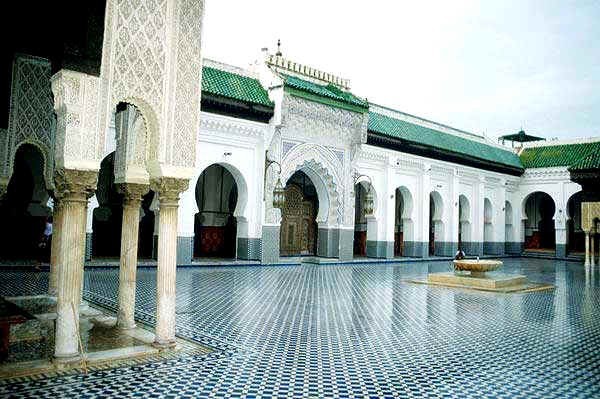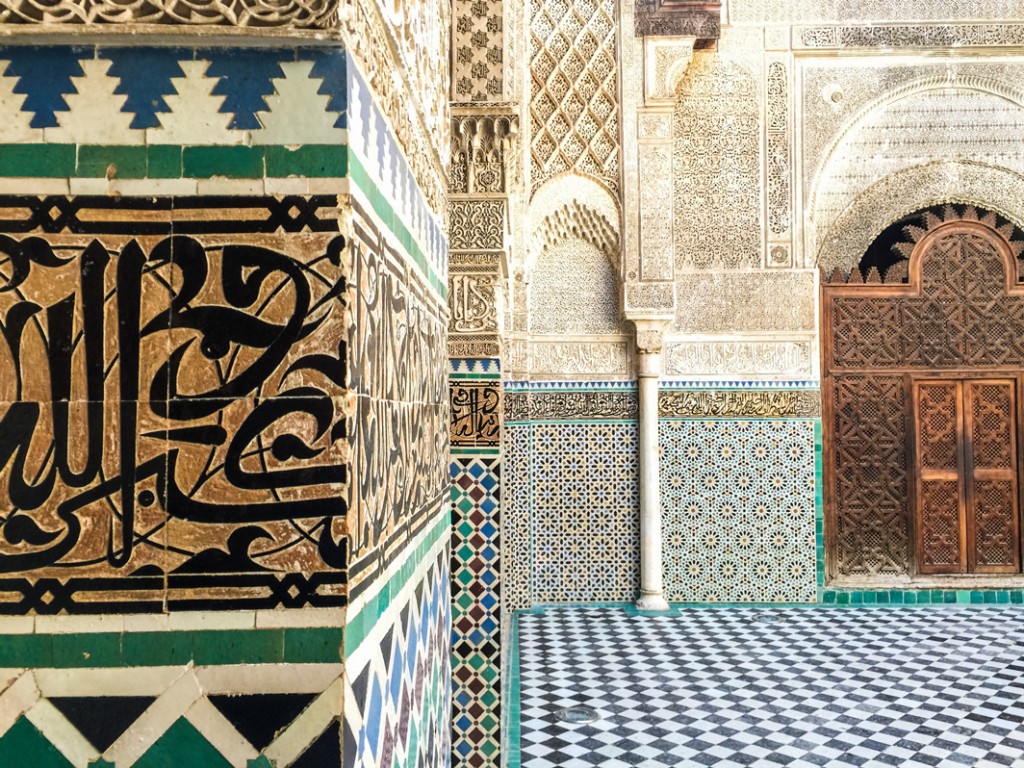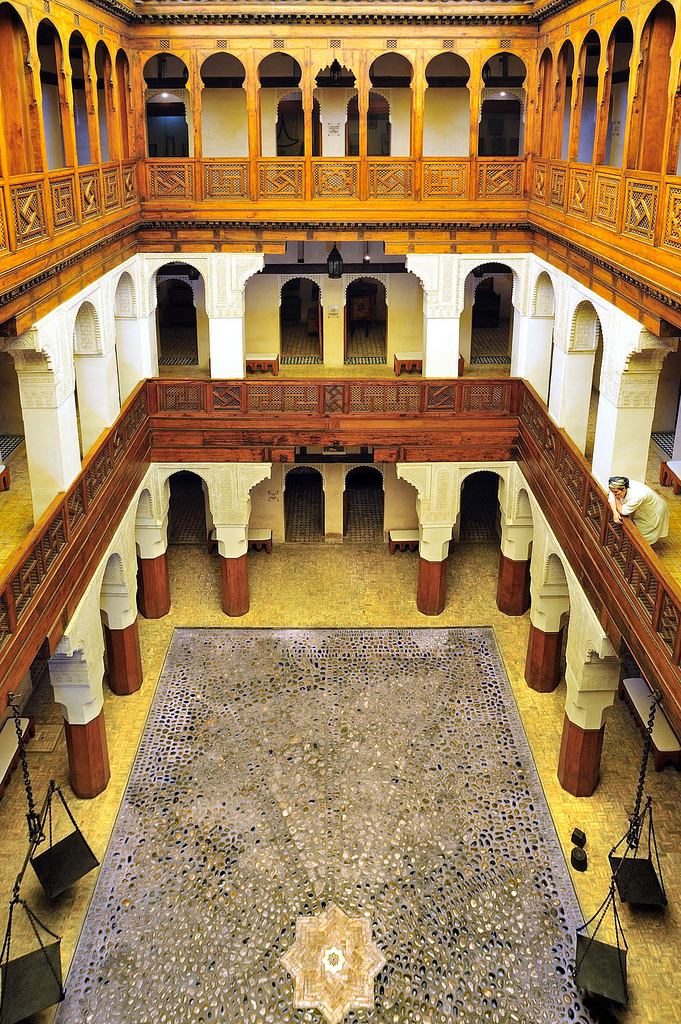The whole of the old city, Fez-el- Bali, is nothing less than a large open-air museum, with countless architectural masterpieces awaiting your discovery in its 9,400 small narrow streets. Among the 10,572 listed buildings of historic interest, Fez has 185 mosques, numerous madrasahs and a selection of truly magnificent palaces. There are so many sites that simply should not remain invisible.

Without a doubt, the most imposing of all its mosques is Quaraouiyine . Founded in 859 by Fatima El Fihria and enlarged later, it is the very beating heart of the city. Its name comes from the district in which it is located, then inhabited by refugees from Kairouan. The Andalusian mosque dates back to 860, and its large walkway decorated with zelliges and its carved wooden eaves are not to be missed. The Moulay Idriss Zaouia shelters the tomb of the founder of the city, Moulay Idriss II.

The medersas (Koranic universities) vividly bear witness to the city’s intellectual and scientific past. They are the work of the Marinid sultans and have played a leading role in political, educational and cultural life. Founded in the 13th century, the first to be built was the Medersa Seffarine, remarkable for the sober elegance of its decor. The Madrasa Bou Inania is remarkable for the sumptuousness of its architecture – its richness in carved stucco and carved cedar wood, and its rich decor in onyx and marble. Ibn Khaldoun taught there. The Medersa El-Attarine was built in 1325 and is one of the wonders of the city, a real masterpiece, its decor – carved marble and calligraphy, cedar wooden arches, finely worked mosaics and arabesques – d ‘a breathtaking delicacy. The Medersa Cherratine was built by Sultan Moulay Rachid in the 17th century and could accommodate up to two hundred students at a time.
In the past, the fondouks (caravanserais) were trading centers, used as trading houses, hotels and warehouses. They are located along the main arteries of the medina (Talaa el Kibira, Talaa Sghira, Ras Cherratine and Nejjarine) and near its main entrance doors (Bab Boujloud, Bab Elguissa and Bab Ftouh). The fountain extends the fondouk on the square with a subtle elegance. Among the city’s 70 monumental public fountains, many are true masterpieces of decorative art – the Nejjarine fountain, as well as that of Souk Hayek and the Qouas fountain are particularly fine examples.

Batha Palace is now a museum of arts and traditions, preserving rich collections of traditional Fassi works of art, including jewelry, embroidery, carpets, pottery, brass and wrought iron. The Nejjarine Museum of Wood Arts and Crafts is housed in a beautifully restored former Fondouk, whose roof terrace offers a splendid view of Fez and the surrounding hills.
The Quaraouiyine library dates back to the 12th century. Since 1613, it has housed more than 32,000 manuscripts, playing a major role in ensuring the influence of the city as the scientific and intellectual capital of the Maghreb. It has recently been restored and continues to conserve its unique collections of rare documents – works by the pen of great sages like Averroes and Ibn Khaldoun.

You must be logged in to post a comment.